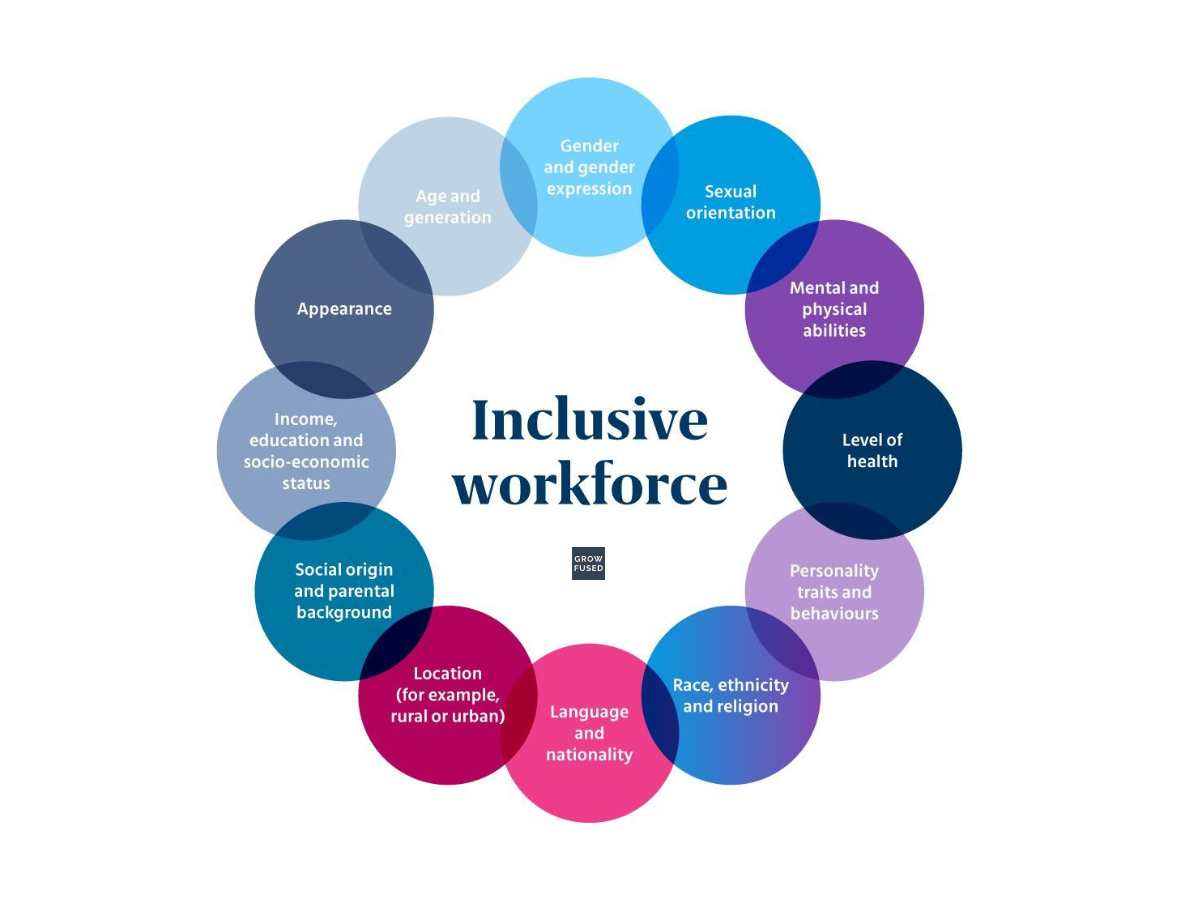Research shows that inclusive workplaces are six times* more likely to be innovative and twice as likely to meet or surpass financial goals. On top of that, employees who feel able to bring their whole selves to work are 42%** less likely to plan on leaving for another position within a year. At the core, it’s true that the higher the level of inclusion, the higher the level of well-being and engagement in your employees, which can lead to better business results.
It is mind-blowing that a lot of organizations still believe that their workforce is diverse because there are a handful of women in it. Women must be included as naturally as men.

However, more importantly, the parameter for diversity not only includes women, but it encompasses diverse genders, as well as race, nationality, ethnicity, religion, sexuality and physical abilities. It is also defined by differences in age groups, academic backgrounds, personalities, skill sets, life experiences, and knowledge. Diversity is often paired with inclusion. These two may be interconnected concepts, but they are not at all interchangeable.
Interconnected but not interchangeable
Diversity in the workplace denotes that the organization has a diverse team that is representative of the society in which it works. Inclusion is about reaffirming that diversity is meaningful and that contributions and participation of different groups of people are being integrated into the decision-making levels. The terms “diversity” and “inclusion” are widely used among many organizations, but an organization can only claim to have truly achieved diversity and inclusion when these values are fully integrated into recruitment processes and work culture.
The next steps
A simple way for organizations to take the next step towards meaningful diversity and inclusion is an employee survey or a focus group discussion. This can help companies find answers to tough questions such as:
- Does the top-level management mainly consist of heterosexual white men? If yes, what can be done about it?
- Is the human resource team only hiring top-graduate women in their mid 20’s ? If yes, why is this happening?
- What changes do we need to make for a workplace that is respectful of diversity?
Taking the findings of such a survey, and analyzing them based on the company context, can help inform the basis of new diversity and inclusion policies.
These can include, but are not limited to, the following:
Taking the findings of such a survey, and analyzing them based on the company context, can help inform the basis of new diversity and inclusion policies.
- Sensitize employees about diversity
- Dissect organizational culture
- Reviewing existing quotas
- We must join together – collective forces and resources can push for change
How to empower employees to be more inclusive
An inclusive workplace is cooperative, collaborative, open, fair, curious, accountable and so much more. Take a look at these components of inclusion, plus tips for helping to create an inclusive workplace:
- Give employees access to resources to be inclusive
- Give employees a voice
- Accept and value your employees
- Give employees opportunity to develop and learn
- Create an collaborative environment
- Focusing intentionally on inclusive practices
- Create a sense of belonging
*According to Deloitte
**According to Harvard Business Review
Subscribe To Our Newsletter
Consider subscribing if you don’t want to miss out on amazing offers and when new posts go up!!
